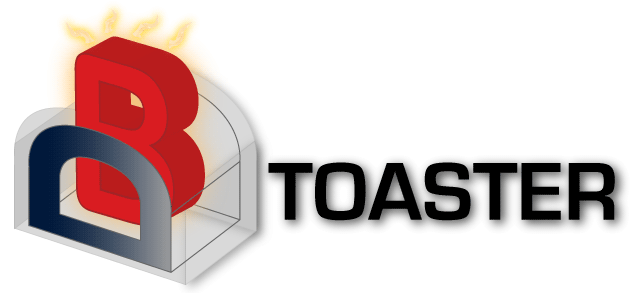Note: To compile and run queries using the C++ backend requires g++ 4.8 or above. Please refer to Installation for more details.
1. Quickstart Guide
DBToaster generates C++ code for incrementally maintaining the results of a given set of queries when cpp is set as the output language (using the -l flag). In this case the compiler produces a C++ header file that contains a set of datastructures (tlq_t, data_t and Program) required for linking with the driver program.
Let's consider the following SQL query:
Alternatively, DBToaster can build a standalone binary (if the -c [binary name] flag is present) by compiling the generated header file against the driver program lib/dbt_c++/main.cpp, which executes the generated code and prints the results.
Running the compiled binary will result in the following output:
2. C++ API Guide
The DBToaster C++ codegenerator produces a header file containing three main type definitions in the dbtoaster namespace: tlq_t, data_t and Program. Additionally snapshot_t is pre-defined as a garbage collected pointer to tlq_t. What follows is a brief description of these types, while a more detailed presentation can be found in the Reference section.
- tlq_t encapsulates the materialized views directly needed for computing the results and offers functions for retrieving them.
- data_t extends tlq_t with auxiliary materialized views needed for maintaining the results and offers trigger functions for incrementally updating them.
- Program represents the execution engine of the generated program. It encapsulates a data_t object and provides implementations to a set of abstract functions of the IProgram class used for running the program. Default implementations for some of these functions are inherited from the ProgramBase class while others are generated depending on the previously defined tlq_t and data_t types.
2.1. Executing the Program
The execution of a program can be controlled through the functions: IProgram::init(), IProgram::run(), IProgram::is_finished(), IProgram::process_streams() and IProgram::process_stream_event().
- virtual void IProgram::init()
- Loads the tuples of static tables and performs initialization of materialized views based on that data. The definition of this functions is generated as part of the Program class.
- void IProgram::run( bool async = false )
- Executes the program by invoking the Program::process_streams() function. If parameter async is set to true the execution takes place in a separate thread. This is a standard function defined by the IProgram class.
- bool IProgram::is_finished()
- Tests whether the program has finished or not. Especially relevant when the program is run in asynchronous mode. This is a standard function defined by the IProgram class.
- virtual void IProgram::process_streams()
- Reads stream events from various sources and invokes the IProgram::process_stream_event() on each event. Default implementation of this function (ProgramBase::process_streams()) reads events from the sources specified in the SQL program.
- virtual void IProgram::process_stream_event(event_t& ev)
- Processes each stream event passing through the system. Default implementation of this function (ProgramBase::process_stream_event()) does incremental maintenance work by invoking the trigger function corresponding to the event type ev.type for stream ev.id with the arguments contained in ev.data.
2.2. Retrieving the Results
The snapshot_t IProgram::get_snapshot() function returns a snapshot of the results of the program. The query results can then be obtained by calling the appropriate get_TLQ_NAME() function on the snapshot object as described in the reference of tlq_t. If the program is running in asynchronous mode it is guaranteed that the taken snapshot is consistent.
Currently, the mechanism for taking snapshots is trivial, in that a snapshot consists of a full copy of the tlq_t object associated with the program. Consequently, the time required to obtain such a snapshot is linear in the size of the results set.
2.3. Basic Example
We will use as an example the C++ code generated for the rs_example1.sql SQL program introduced above. In the interest of clarity some implementation details are omitted.
Below is an example of how the API can be used to execute the generated program and print its results:
2.4. Custom Execution
Custom event processing can be performed on each stream event if the virtual function void IProgram::process_stream_event(event_t& ev) is overriden while still delegating the basic processing task of an event to Program::process_stream_event().
Example: Custom event processing.
Stream events can be manually read from custom sources and fed into the system by overriding the virtual function void IProgram::process_streams() and calling process_stream_event() for each event read.
Example: Custom event sourcing.
3. C++ Generated Code Reference
3.1. struct tlq_t
The tlq_t contains all the relevant datastructures for computing the results of the SQL program, also called the top level queries. It provides a set of functions named get_TLQ_NAME that return the top level query result labeled TLQ_NAME. For our example the tlq_t produced has a function named get_RESULT that returns the query result corresponding to SELECT SUM(r.A*s.C) as RESULT ... in rs_example1.sql.
3.1.1. Queries computing collections
In the example above the result consisted of a single value. If however our query has a GROUP BY clause its result is a collection and the corresponding get_RESULT function will return either a MultiHashMap.
Let's consider the following example:
3.2. struct data_t
The data_t contains all the relevant datastructures and trigger functions for incrementally maintaining the results of the SQL program.
For each stream based relation STREAM_X, present in the SQL program, it provides a pair of trigger functions named on_insert_STREAM_X() and on_delete_STREAM_X() that incrementally maintain the query results in the event of an insertion/deletion of a tuple in STREAM_X. If generating code for the query presented above (rs_example1.sql) the data_t produced has the trigger functions void on_insert_S(long S_B, long S_C) / void on_delete_S(long S_B, long S_C).
For static table based relations only the insertion trigger is required and will get called when processing the static tables in the initialization phase of the program.
3.3. class Program
Finally, Program is a class that implements the IProgram interface and provides the basic functionalities for reading static table tuples and stream events from their sources, initializing the relevant datastructures, running the SQL program and retrieving its results.
